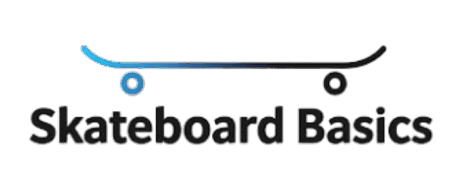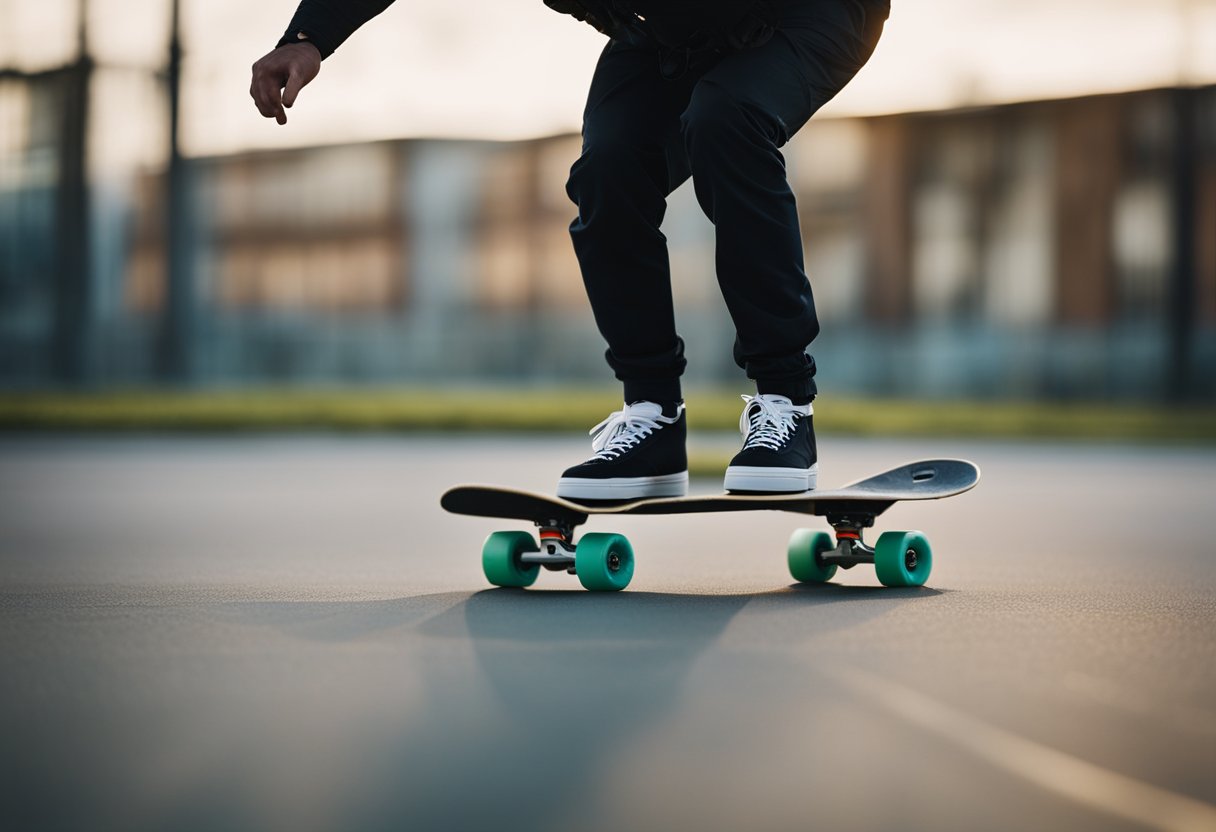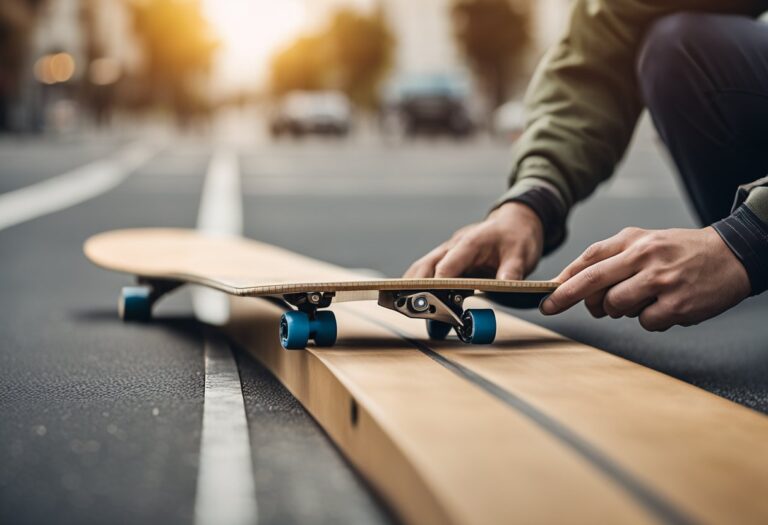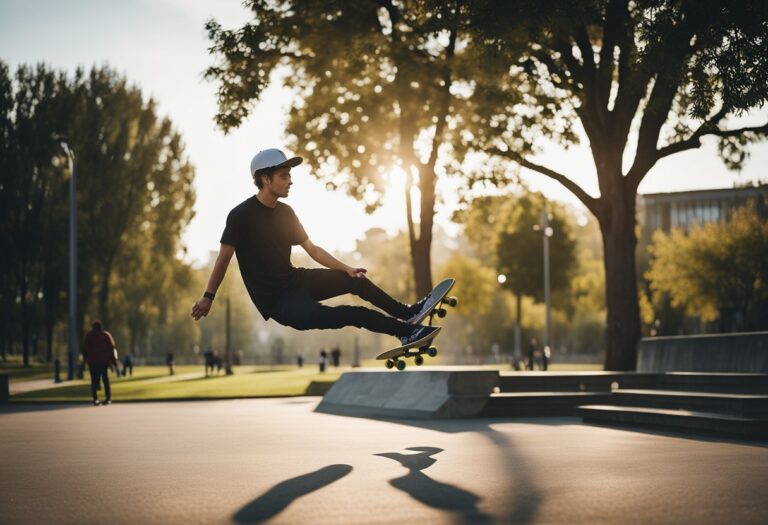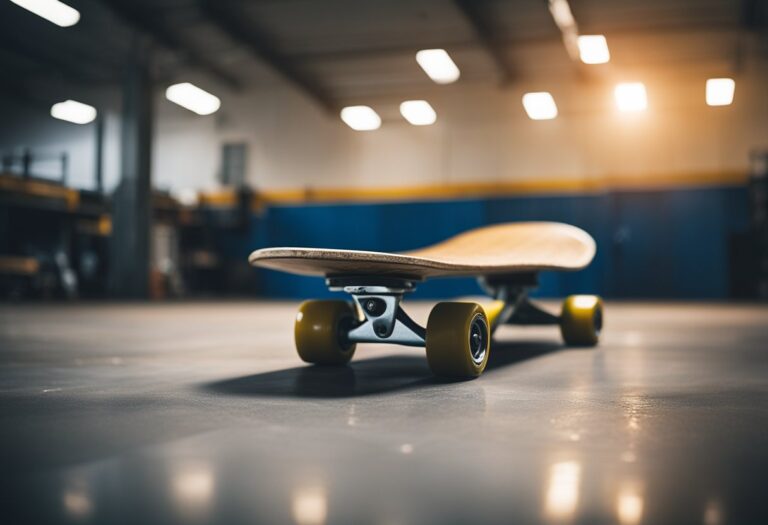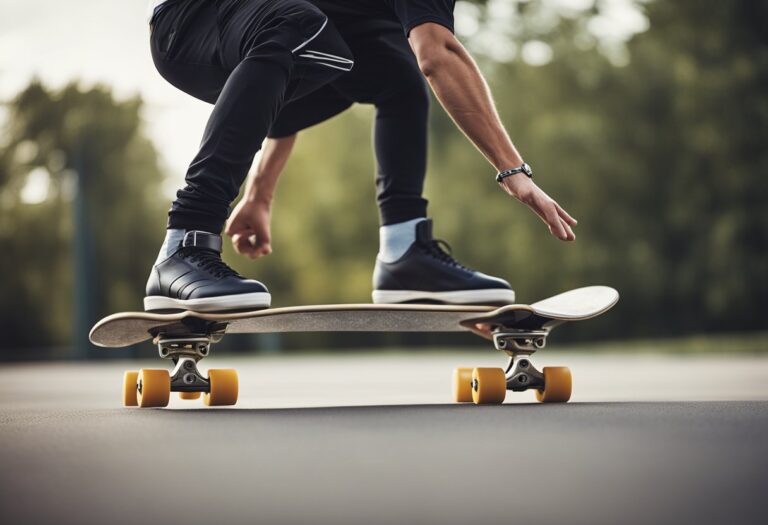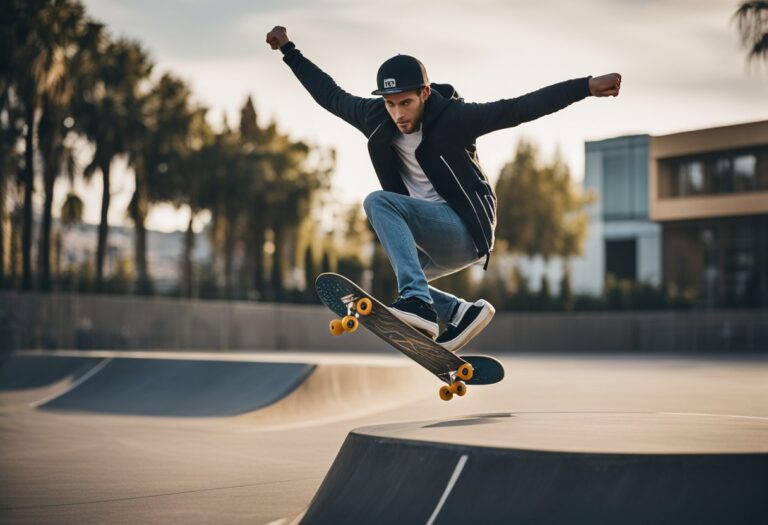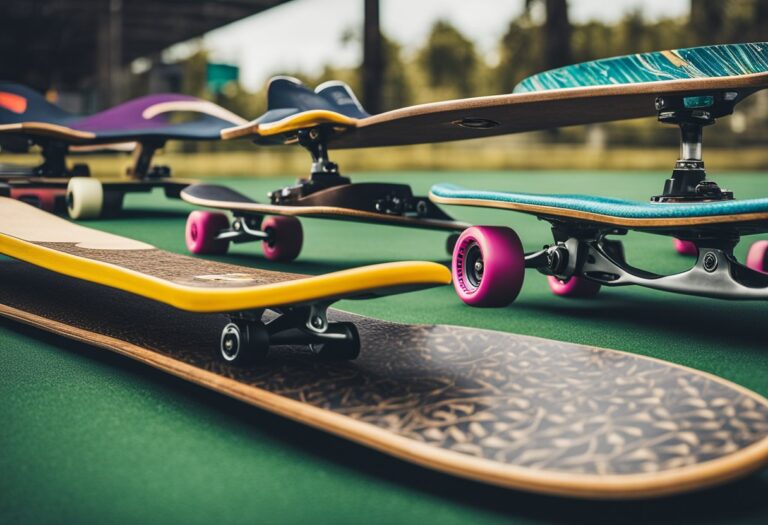How to Slow Down on a Skateboard as a Beginner
Skateboarding has become a popular sport among young people, and it’s easy to see why. It’s an exciting way to get around and show off your skills. However, as a beginner, it can be challenging to slow down or stop your skateboard. This can be a serious safety concern, and it’s important to learn how to do it properly.

Understanding the Basics of Skateboarding is crucial before attempting to slow down. Skateboarding involves balance and coordination, and you need to be comfortable on your board before trying any tricks. It’s essential to wear Safety Gear and prepare yourself mentally and physically before riding your skateboard. Once you feel comfortable on your board, you can start learning how to slow down.
Key Takeaways
- Understanding the basics of skateboarding is crucial before attempting to slow down.
- Safety gear and preparation are essential before riding your skateboard.
- Foot braking and carving are two techniques that beginners can use to slow down on a skateboard.
Understanding the Basics of Skateboarding

Skateboarding is a fun and exciting sport that requires skill, balance, and practice. Before attempting any tricks or maneuvers, it is important to understand the basics of skateboarding.
Firstly, a skateboard is made up of several components, including the deck, trucks, wheels, and bearings. The deck is the flat board that the rider stands on, while the trucks are the metal pieces that attach the wheels to the deck. The wheels are made of polyurethane and come in different sizes and hardness levels. Finally, the bearings are the small metal pieces that allow the wheels to spin.
Secondly, it is important to know the different stances in skateboarding. Most people ride with their left foot forward, which is called regular stance. However, some people prefer to ride with their right foot forward, which is called goofy stance. It is important to find the stance that feels most comfortable and natural for the rider.
Thirdly, balance is key in skateboarding. The rider must distribute their weight evenly on the board to maintain balance while riding. It is important to practice standing on the board and shifting weight from side to side before attempting to ride.
Finally, it is important to understand the different types of terrain in skateboarding. Skateparks offer ramps, rails, and other obstacles for riders to perform tricks on. However, it is also possible to ride on streets, sidewalks, and other urban environments. It is important to be aware of one’s surroundings and to follow all traffic laws and regulations.
By understanding these basics, beginners can set themselves up for success in skateboarding and have a safe and enjoyable experience.
Safety Gear and Preparations

Choosing the Right Safety Gear
Before hitting the road, it is important to ensure that you have the necessary safety gear. As a beginner skateboarder, it is crucial to invest in a good quality helmet, knee pads, elbow pads, and wrist guards. These pieces of equipment will protect you in case of a fall or accident.
When choosing safety gear, make sure that it fits properly and is comfortable to wear. A helmet should fit snugly on the head and should not move around. Knee pads and elbow pads should cover the joints completely and should not slide down. Wrist guards should be tight enough to prevent them from slipping off but not so tight that they cut off circulation.
Pre-Ride Safety Checks
Before starting to skate, it is important to do a quick safety check of your equipment. Check the skateboard for any cracks or damage. Make sure that the trucks are tight enough to provide stability but loose enough to allow for easy turning.
Check the wheels to ensure that they are tightly secured and that there are no rocks or debris stuck in them. Make sure that the bearings are clean and well lubricated.
Finally, check your safety gear to make sure that it is properly fitted and in good condition. By taking these simple steps, you can ensure that you are prepared for a safe and enjoyable ride on your skateboard.
Foot Braking Technique

As a beginner, one of the most important skills to learn when skateboarding is how to slow down properly. Foot braking is a simple and effective method for slowing down on a skateboard. In this section, we will discuss the foot braking technique and how to perform it correctly.
Positioning Your Foot
To perform foot braking, the rider should start by positioning their back foot over the tail of the skateboard. The front foot should be placed near the middle of the board with the toes pointing forward. The rider should then shift their weight onto their front foot, while keeping their back foot over the tail.
Applying Pressure Gradually
To slow down using the foot braking technique, the rider should begin by applying pressure to the ground with their back foot. The pressure should be applied gradually and the rider should avoid stomping on the ground. As the rider applies pressure, the skateboard will slow down gradually.
It is important to note that the rider should keep their front foot steady and avoid shifting their weight too far forward. Shifting too far forward can cause the skateboard to stop abruptly, which can result in the rider losing their balance and falling off the board.
In conclusion, foot braking is an essential skill for beginners to learn when skateboarding. By positioning their back foot over the tail of the skateboard and applying pressure gradually, riders can slow down safely and effectively.
Carving to Reduce Speed

As a beginner skateboarder, it can be intimidating to go fast. Fortunately, there are techniques to help reduce speed, one of which is carving. Carving is a technique that involves turning the board back and forth in a zig-zag motion to slow down. Here are some tips on how to use carving to reduce speed.
Leaning into Turns
To carve, the rider must lean into turns. This means that the rider must shift their weight to the heels and toes of their feet to turn the board. To turn left, the rider must lean on their heels, and to turn right, they must lean on their toes. By leaning into turns, the rider can control the direction of the board and slow down.
Controlling the Carve
To control the carve, the rider must use their upper body to turn the board. The rider should keep their shoulders facing forward and twist their torso to turn the board. This will help the rider maintain balance and control while carving. Additionally, the rider can use their arms to help turn the board by extending them out in the direction they want to turn.
Overall, carving is an essential technique for beginner skateboarders looking to reduce speed. By leaning into turns and controlling the carve, riders can slow down safely and effectively. With practice, carving can become a natural and intuitive technique for any skateboarder.
Using the Tic-Tac Method

As a beginner, one of the easiest ways to slow down on a skateboard is by using the tic-tac method. This method involves shifting your weight from side to side while moving forward on the board. Here are two important steps to keep in mind when using the tic-tac method:
Shifting Weight Sideways
To slow down using the tic-tac method, the rider should shift their weight from side to side while moving forward. This can be done by turning the board slightly in one direction, then shifting the weight to the opposite side. The rider should repeat this process, alternating sides and gradually slowing down.
Gaining Stability
It is important to maintain stability while using the tic-tac method to slow down. The rider can do this by keeping their knees slightly bent and their feet shoulder-width apart. This will help to absorb any shocks or vibrations from the road, and keep the rider balanced on the board.
By using the tic-tac method, beginners can easily slow down on a skateboard without having to rely on more advanced techniques. With practice and patience, this method can become a valuable tool for any skateboarder looking to improve their skills.
Bailing Out Safely

Identifying Safe Exit Points
As a beginner skateboarder, it is important to know how to safely bail out when things don’t go as planned. One of the first steps to bailing out safely is to identify safe exit points. This means looking ahead and around your environment for areas that are free of obstacles and hazards.
When riding a skateboard, it is important to always be aware of your surroundings and to anticipate any potential dangers. If you are riding near a curb or other obstacle, make sure to plan ahead and look for a safe place to bail out if needed.
Practicing Falling Techniques
Another key aspect of bailing out safely is practicing falling techniques. Falling is a natural part of skateboarding, and it is important to know how to do it safely.
One technique is to try to roll with the fall. This means tucking your chin into your chest, rolling onto your side, and using your arms to protect your head. Another technique is to slide out of the fall, by putting one hand on the ground and sliding your body to a stop.
It is important to practice these techniques in a safe environment, such as a grassy area or a skate park. By practicing falling techniques, you can reduce your risk of injury and build confidence in your ability to bail out safely.
Remember, bailing out safely is a crucial skill for any skateboarder, especially beginners. By identifying safe exit points and practicing falling techniques, you can stay safe while enjoying the thrill of skateboarding.
Controlling Speed on Different Terrains

Skating on Flat Ground
As a beginner, skating on flat ground is the best place to start. To control your speed on flat ground, you can use a few techniques. One technique is to carve back and forth, which involves shifting your weight from one side to the other to turn your board. This helps to reduce your speed without coming to a complete stop. Another technique is to use your foot to drag on the ground, which creates friction and slows you down. It is important to practice these techniques and find the one that works best for you.
Handling Slopes and Hills
Slopes and hills can be challenging for beginners. To control your speed on slopes and hills, you can use the same techniques as on flat ground, but you will need to be more cautious. Carving back and forth can help slow you down, but it is important to keep your weight centered over the board to maintain control. Using your foot to drag on the ground is also effective, but be careful not to drag too hard or you may lose your balance.
Another technique for controlling speed on slopes and hills is to use the “scissor stop.” This involves turning your front foot perpendicular to the board and pushing down on the tail of the board with your back foot. This creates friction and slows you down quickly. However, this technique requires practice and should only be attempted once you have gained some experience.
In conclusion, controlling your speed on different terrains requires practice and patience. By using the techniques outlined above, you can safely slow down and maintain control of your skateboard as a beginner.
Maintaining Your Skateboard

Regular Cleaning
Keeping your skateboard clean is an essential part of maintaining its longevity and performance. It is recommended that you clean your skateboard after every use to prevent dirt and debris from accumulating on the board.
To clean your skateboard, you will need a soft-bristled brush, a damp cloth, and a mild cleaning solution. Start by removing the wheels and bearings from the board and setting them aside. Then, use the brush to remove any dirt and debris from the deck and trucks. Next, use the damp cloth and cleaning solution to wipe down the deck and trucks, making sure to remove any stubborn dirt or stains.
Once the deck and trucks are clean, you can reattach the wheels and bearings and give them a quick wipe down as well. Regular cleaning will not only keep your skateboard looking great, but it will also help prevent rust and other damage from occurring.
Wheel and Bearing Care
The wheels and bearings on your skateboard are crucial components that require regular care and maintenance. Over time, dirt and debris can accumulate in the bearings, which can cause them to slow down or even seize up. To prevent this from happening, it is recommended that you clean and lubricate your bearings regularly.
To clean your bearings, you will need a bearing cleaning kit, which can be purchased at most skate shops. Start by removing the wheels from your skateboard and then remove the bearings from the wheels. Place the bearings in the cleaning kit and follow the instructions on the kit to clean them thoroughly.
Once the bearings are clean, it is important to lubricate them with a high-quality bearing lubricant. Apply a small amount of lubricant to each bearing and then reassemble the wheels onto your skateboard. Regular wheel and bearing maintenance will help keep your skateboard rolling smoothly and prevent unnecessary wear and tear.
Frequently Asked Questions

What are the safest techniques for a beginner to stop on a skateboard?
For a beginner, the safest techniques to stop on a skateboard are foot braking, power sliding, and carving. It is important to practice these techniques in a safe and controlled environment before attempting them on busy streets or crowded areas.
Can you explain the foot braking method for slowing down on a skateboard?
Foot braking is a simple and effective technique for slowing down on a skateboard. To foot brake, the rider takes one foot off the board and drags it on the ground to create friction and slow down the skateboard. It is important to keep the other foot on the board and maintain balance while foot braking.
What should beginners know about controlling speed when skateboarding downhill?
When skateboarding downhill, beginners should focus on maintaining a stable and balanced posture, keeping their weight over the front trucks, and using a combination of foot braking, carving, and power sliding to control their speed. It is important to start with smaller hills and gradually work up to steeper ones as skill and confidence improve.
How can a beginner effectively use a heel drag to reduce speed on a skateboard?
To use a heel drag to reduce speed on a skateboard, the rider takes one foot off the board and drags the heel of their shoe on the ground to create friction and slow down. It is important to keep the other foot on the board and maintain balance while heel dragging. This technique is best used at slower speeds and on flat terrain.
What are the basic steps to come to a stop on a longboard for someone new to skateboarding?
To come to a stop on a longboard, a beginner should shift their weight over the front trucks, take one foot off the board, and drag it on the ground to create friction and slow down. Once the board has slowed down enough, the rider can step off the board with their other foot to come to a complete stop.
Are there any tips for beginners on how to manage speed on a Penny board?
To manage speed on a Penny board, beginners should focus on maintaining a stable and balanced posture, keeping their weight over the front trucks, and using a combination of foot braking, carving, and power sliding to control their speed. It is important to start with smaller hills and gradually work up to steeper ones as skill and confidence improve.
